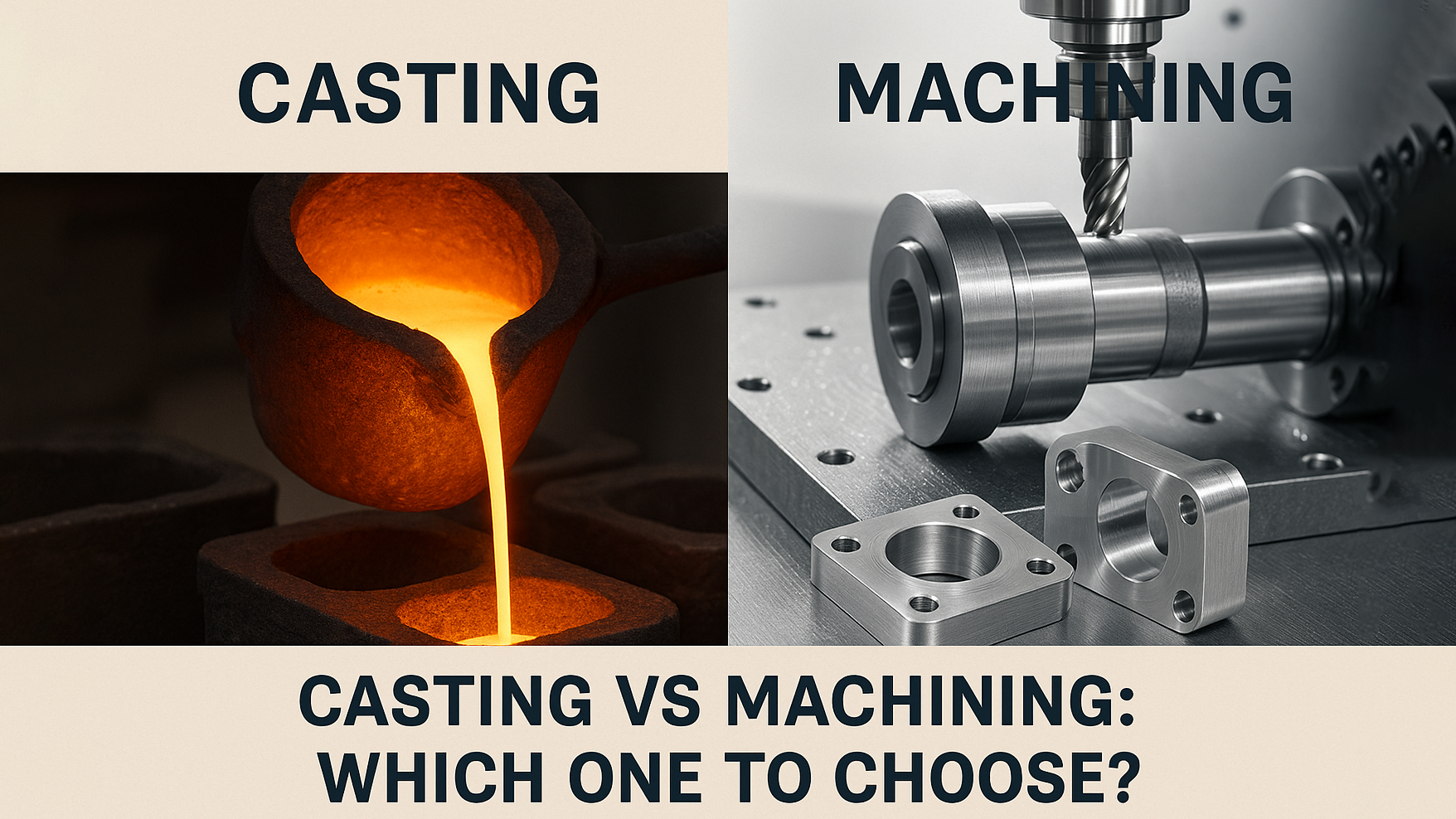In the world of metal manufacturing, casting and machining are two widely adopted yet fundamentally different production techniques. Each method has its own strengths, limitations, and ideal application scenarios. Understanding the differences between casting and machining is critical when selecting the most suitable process for your specific part design, budget, and performance requirements.
What is Casting?
Casting is a manufacturing process in which molten metal is poured into a mold an allowed to solidify. The resulting shape is then ejected from the mold to form a near-net shape part. Common types of casting include:
-
Die casting (for high-volume, non-ferrous parts)
-
Sand casting (for large, complex geometries)
-
Investment casting (for intricate, high-precision parts)

Key Advantages:
-
Cost-effective for high-volume production
-
Ideal for complex geometries and internal cavities
-
Good material utilization with minimal waste
-
Wide range of metal alloys can be used
Limitations:
-
Surface finish and dimensional accuracy are often lower than machining
-
Post-processing may be required (e.g., deburring, heat treatment)
-
Tooling cost can be high for small production runs
What is Machining?
Machining is a subtractive manufacturing process that removes material from a workpiece using cutting tools. It includes processes such as:
-
CNC milling
-
Turning
-
Drilling
-
Grinding

Key Advantages:
-
High precision and tight tolerances (±1μm possible with ultra-precision CNC)
-
Excellent surface finish (Ra ≤ 0.01μm achievable)
-
Flexibility in material choices, including hardened metals
-
Suitable for low-volume or custom parts with rapid turnaround
Limitations:
-
Higher cost per unit for large-scale production
-
Greater material waste
-
Longer lead times for complex parts unless advanced CNC systems are used
When to Choose Casting
Casting is the ideal choice when:
-
You need large quantities of the same part
-
The part has complex internal structures or thick walls
-
Cost-efficiency is more important than extreme precision
-
You’re working with non-ferrous metals like aluminum, magnesium, or zinc

When to Choose Machining
Machining is preferred when:
-
Your design requires high dimensional accuracy and fine surface finishes
-
Parts are made from hard or exotic materials (e.g., titanium, stainless steel)
-
You need rapid prototyping or low-volume production
-
Customization or design iteration is expected
Hybrid Approach: Casting + Machining
In many industrial applications, the best solution combines both methods. A part can be cast to near-net shape and then machined at critical surfaces to ensure precision, functional interfaces, or optical-grade finishes. This hybrid approach balances cost and performance.

Conclusion: It Depends on Your Priorities
There is no one-size-fits-all answer when choosing between casting and machining. The decision depends on your budget, volume, design complexity, precision requirements, and lead time expectations.
At [Your Company Name], we offer both high-precision CNC machining and die casting services, allowing you to choose—or combine—technologies for optimal results. Whether you need rapid prototypes, medical-grade precision, or large-scale casting for industrial parts, our engineering team can help you make the right decision.
Contact us today to discuss your project and explore the most cost-effective and technically sound solution for your components.

Share:
High-Precision Gear Machine Shop with Laser and CNC Services
Precision CNC Machining Services in Malaysia – From Prototyping to High-Volume Manufacturing